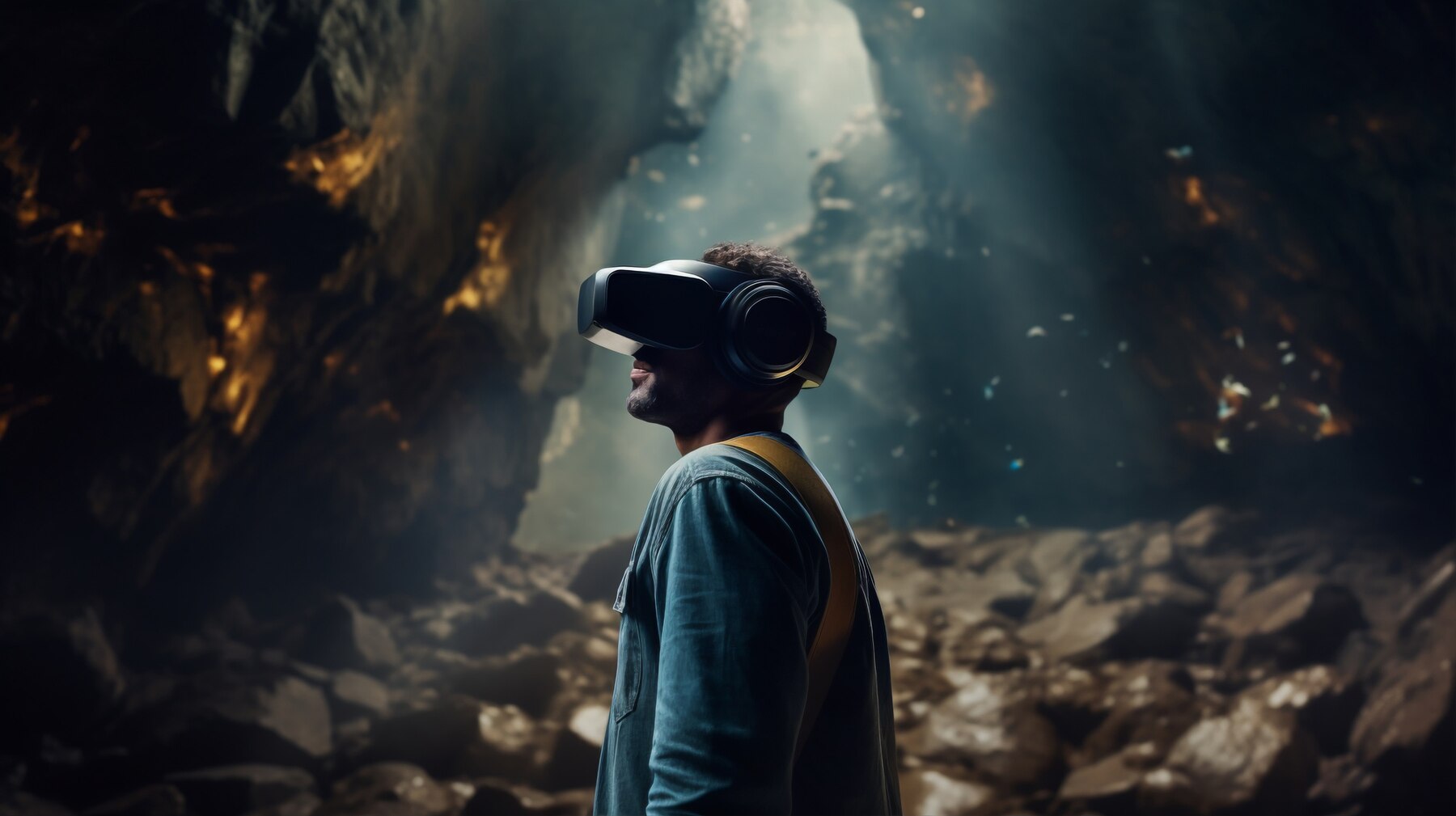Navigating the Evolution of Virtual & Augmented Reality
Virtual and Augmented Reality: two realms once confined to science fiction, now shaping the very fabric of our digital existence. Virtual Reality (VR) immerses users in computer-generated environments, while Augmented Reality (AR) overlays digital images onto the real world. From the humble beginnings of stereoscopes to the groundbreaking advancements of today, let’s delve into the evolution of VR and AR.
A Glimpse into History:
In 1838, Charles Wheatstone laid the groundwork for VR with his exploration of stereopsis, enabling the creation of the earliest stereoscope. Fast forward to the 1930s, where Stanley Weinbaum’s “Pygmalion’s Spectacles” envisioned a world of complete immersion, foreshadowing VR’s potential. The 1950s introduced Sensorama, the first known VR machine, followed by Hugo Gernsback’s TV glasses in 1963, expanding the horizons of personal entertainment.
The pivotal moment arrived in 1968 with the invention of the Sword of Damocles, the first VR head-mounted display system, albeit primitive. The journey continued with the Sayre Gloves in the 1980s, laying the groundwork for gesture recognition. But it was Palmer Luckey’s Oculus Rift in the 2010s that revitalized interest in VR, culminating in Facebook’s acquisition and subsequent rebranding to Meta in 2021, signaling a renewed focus on the metaverse.
And now, in 2024, Apple disrupts the landscape with the Apple Vision Pro, blurring the lines between digital and physical realities. Tim Cook heralds it as the dawn of a new era, where mixed reality reigns supreme.
Main Components of VR Headsets:
The essence of VR lies in its components. A high-resolution display transports users into virtual worlds, while carefully crafted lenses enhance the immersive experience. Movement tracking, whether 3 DoF or 6 DoF, dictates the freedom of exploration, while tracking methods like inside-out and outside-in ensure seamless interaction. Selection, manipulation, and locomotion complete the immersive journey, offering users unprecedented control.
Applications of VR & AR:
From education to healthcare, entertainment to automotive, VR and AR permeate every facet of our lives. In education, VR revolutionizes learning by offering immersive experiences, while in healthcare, it provides a safe space for training and surgical simulation. Entertainment reaches new heights with immersive gaming experiences and virtual escapades. Meanwhile, the automotive industry utilizes VR and AR for design experimentation, saving time and resources.
Tourism embraces VR, allowing travelers to explore destinations virtually before embarking on physical journeys. The applications are limitless, reshaping industries and enhancing user experiences across the board.
The Future Beckons:
1. As Apple’s foray into VR marks a significant milestone, the stage is set for a new era of innovation.
2. Competitors will follow suit, driving prices down and expanding accessibility.
3. AR glasses like XREAL Air 2 Ultra and TCL Ray Neo X2 offer a glimpse into the future, where seamless integration of virtual and physical realities becomes the norm.
4. The virtual reality market is poised for exponential growth, with projections soaring to USD 204 billion by 2029.
5. With each advancement, VR and AR inch closer to mainstream adoption, reshaping the way we perceive and interact with the digital world.
6. The convergence of VR and AR technologies opens doors to unprecedented possibilities, from enhancing education and healthcare to transforming entertainment and travel experiences.
Conclusion:
The journey of Virtual and Augmented Reality from fiction to reality is nothing short of miraculous. What once existed solely in the realm of imagination now shapes our digital landscape, offering boundless opportunities for exploration and innovation. As we stand on the precipice of a new era, one thing is certain: the future is virtual, and it’s closer than we think. With each passing day, VR and AR redefine the boundaries of human experience, ushering in a new era of interconnectedness and possibility.
Expanding our understanding of VR and AR not only enriches our technological prowess but also opens doors to a world of limitless possibilities. As we embrace this transformative journey, let us continue to push the boundaries of innovation and redefine the future of digital experiences.
Exploring Further Horizons:
As we embark on this thrilling journey into the realm of Virtual and Augmented Reality, let us not forget the countless opportunities awaiting exploration. From revolutionizing industries to enhancing everyday experiences, VR and AR hold the key to unlocking a future limited only by our imagination. Let us seize this moment to embrace innovation, inspire creativity, and shape a world where the boundaries between the virtual and the real blur into insignificance. Together, let us embark on this extraordinary adventure into the unknown, where the only limit is our willingness to dream.



